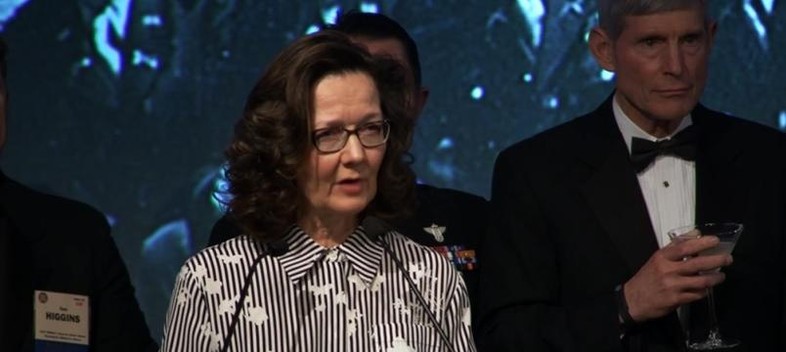Women take charge
March 14, 2018 | Expert Insights

US President Donald Trump has announced that he will be nominating Gina Haspel to become the next Director of the Central Intelligence Agency. If she is confirmed by the Congress, then she would become the first woman to hold this position.
Background
The Central Intelligence Agency (CIA) is a civilian foreign intelligence service of the United States federal government. The agency is in-charge of gathering, processing, and analyzing national security information from around the world. The CIA is known for using HUMINT (human intelligence) methods to gather data. Formed in 1947, the organization reports to the Director of National Intelligence and is primarily focused on providing intelligence for the President and Cabinet. In 2013, The Washington Post reported that in fiscal year 2010, the CIA had the largest budget of all IC agencies, exceeding previous estimates. The scope of CIA exponentially increased in wake of the 9/11 attacks in New York.
Since 2017, the Director of the CIA has also been a cabinet-level position. The Director of the CIA is nominated by the President of the United States. He or she can either be a member of the armed forces or a civilian. The appointment must be then confirmed by a majority vote of the Senate. There is no fixed term on how long the Director of the CIA can serve. Counter terrorism is the main agenda for the CIA.
Through its history, CIA has never had a woman heading the agency. In fact, it was only in 2010, when a woman, Letitia "Tish" Long, was appointed to head a major intelligence agency in the US (National Geospatial-Intelligence Agency).
There have been women who have held prominent positions within the agency. One of the clearest examples to that is Judith A. "Jami" Miscik. Considered to be one of the finest agents within the organization, she rose within CIA, became Deputy Director for Intelligence, the Agency's senior most analytic post. During the run-up to the Iraq War she was one of a number of CIA officials who pushed back against the efforts to link Saddam Hussein and Al-Qaeda. In February 2005, she joined the exodus of senior CIA officials that followed the arrival of Porter Goss as Director of Central Intelligence. Some believe that she could have headed the agency if it were not for her clashes with then President George W Bush. Avril Haines, was another woman to break the proverbial glass ceiling. She was the first woman to be the Deputy Director at CIA and she was also the first female White House Deputy National Security Advisor, serving in Barack Obama's administration.
Around the world, women have headed powerful intelligence agencies in the past. In the UK, Dame Stella Rimington became the head of the Security Service known as the MI-5 in 1992 and continued in that post till 1996. Dame Eliza Manningham Buller also served as the head of MI-5. Her tenure was between 2002 to 2007. It was in this period when the London Metro attacks took place as well as when the Iraq war began.
Analysis
US President Donald Trump on March 2018 announced that he was nominating Jina Haspel as the next Director of the CIA. If her nomination is confirmed, then she would become the first woman to head the historic agency. The current CIA head Mike Pompeo, who was appointed in 2017, will likely become the nation’s next Secretary of State replacing Rex Tillerson. President Trump made this announcement through Twitter noting, “Mike Pompeo, Director of the CIA, will become our new Secretary of State. He will do a fantastic job! Thank you to Rex Tillerson for his service! Gina Haspel will become the new Director of the CIA, and the first woman so chosen. Congratulations to all!”
Haspel has been with the agency since 1981 and is relatively low profile. Perhaps it is because she has spent much of her career undercover. She has received several awards, including the George H. W. Bush Award for excellence in counterterrorism and the Presidential Rank Award, the highest award in the federal civil service.
However, her service is not without its controversies. According to a report from the New York Times, Haspel had overseen the torture of two suspects at a secret prison in Thailand. These incidents reportedly took place in 2002. In addition, the report (published in 2017) also detailed that she had video tapes with incriminating evidence destroyed afterward. The report states that one of the detainees of this secret prison had been waterboarded 83 times. Waterboarding was a form of interrogation that makes the person being subject to it think they are being drowned. Experts have stated that this is similar to torture. In 2006, the Bush administration banned the use of waterboarding as a method of interrogating prisoners. These details are likely to make it difficult during Haspel’s confirmation hearings with the Congress.
Assessment
Our assessment is that if confirmed, Haspel will make history by becoming the first woman to head the Central Intelligence Agency. However, her confirmation is likely to cause concern among those who shall fear her own personal opinions on extreme interrogation techniques.
Her nomination also brings to fore the subject of women heading top intelligence agencies across the world. Even though women have successfully held such positions especially in UK’s MI-5, such are still rare cases. It should also be noted that through its history, women have proved to be adept at covert operations within the CIA and it’s time for a woman to head the agency.








Comments